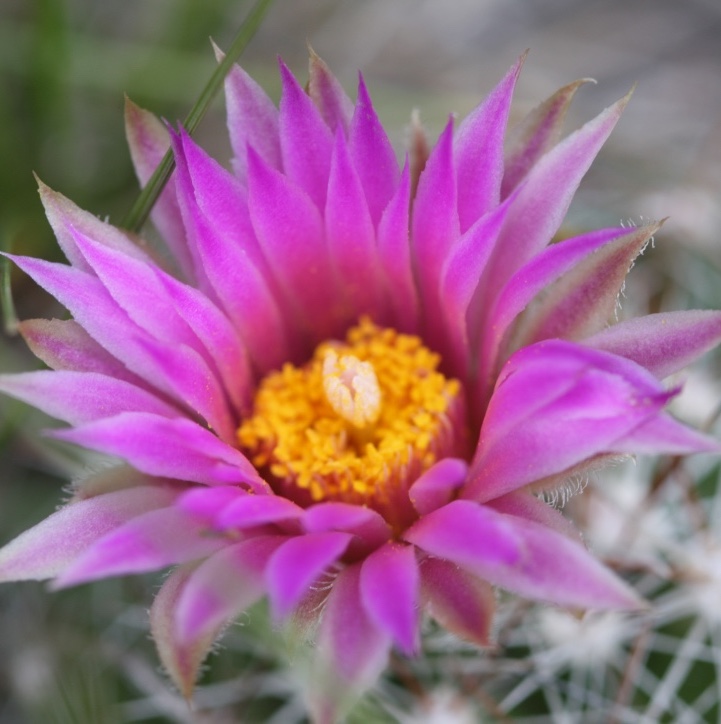The Prairie Ecoregion
This grass-dominated region occupies a large portion of the southern quarter of Alberta, from the Rocky Mountains to the west and stretching all across to the Saskatchewan border; The prairies continue eastward across most of the southern half of Saskatchewan into Manitoba.
Low annual rainfall (~200 to 300 mm) which is the primary limiting factor to plant growth, frequent and high winds, and a frost-free period from 90 days (in the cooler, wetter, north and western portions) to 115 days (dry southeastern areas) are characteristic of this region. It is also characterized by the Brown Chernozemic soil zone.
The southeastern portion of the prairie is the hottest, driest, and accumulates the least snow compared with other areas. Frequent warm winter chinooks are a major factor with inhibiting tree growth with exception of areas that receive higher moisture, such as north-facing coulee slopes, as well as along streams and rivers. The flat, rolling landscape is covered by low-growing, drought resistant species such as needle and thread grass (Hesperostipa comata), junegrass (Koelaria macrantha), blue grama (Bouteloua gracilis), and splashes of colours from forbs like moss phlox (Phlox hoodii), scarlet mallow (Sphaeralcea coccinea), yellow composites, pincushion cacti (Coryphantha vivipara), old man’s whiskers (Geum triflorum), wild blue flax (Linum perenne), and slender blue-beard-tongue (Penstemon procerus). Northern wheatgrass (Agropyron dasystachyum) are found in drier habitats, and western wheatgrass (Pascopyrum smithii) prefer slightly moisture and saline/alkaline sites. You will also find drought-tolerant shrubs such as sagebrush (Artemesia cana), rabbit-brush (Chrysothamnus nauseosus) and greasewood (Sarcobatus vermiculatus); in shaded ravines, shrubs that require more moisture include buckbrush (Symphoricarpos occidentalis), wolf willow (Eleagnus commutata), saskatoon (Amelanchier alnifolia), hawthorn (Crataegus spp.) and choke cherry (Prunus virginiana).
A range-type that is common in this ecoregion is that on solonetzic soils (salt/alkaline) where hard clays will restrict water infiltration and root penetration. Sandberg’s bluegrass (Poa sandbergii), Nuttall’s alkali grass (Puccinellia nutttallii), and gumweed (Grindelia squarrosa) are species common to these sites and adapted to moderate saline and alkaline conditions. Higher saline and alkaline areas are more frequent around lakes and sloughs, with vegetation composition limited to species that are adapted to these extreme conditions. These include salt grasses (Distichlus stricta), prairie bulrush (Scirpus paludosus) and samphire (Salicornia europaea).
Vegetative sand dunes, or sandy regosolic soils are such that often produce rolling landscapes and are common throughout the prairies. Grasses like sandgrass (Calamovilfa longifolia) and Indian rice grass (Oryzopsis hymenoides) are dominant in these areas, and due to a higher water table and root penetration potential, cover by shrubs is more frequent. Badlands support plains muhly (Muhlenbergia cuspidata) and thread-leaved sedge (Carex filifolia) due to natural calcareous formations, and transition to higher moisture regimes with species such as green needle grass (Stipa viridula) and western porcupine grass (Stipa curtiseta).
The western part gives way to an environment of higher precipitation, cooler summer temperatures, and deeper snow cover with lusher growth. Blue grama and sagebrush is replaced by lupines, sticky geranium, northern bedstraw and Canada goldenrod. Fescues and oatgrasses become more dominant, and more trees and shrubs appear such as poplar, choke cherry, currants, and gooseberries. An eventual presence of groves of aspen poplar signals the beginning of the aspen parkland ecoregion. Or, further west, the foothills.
